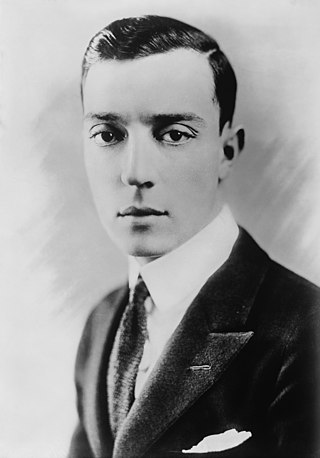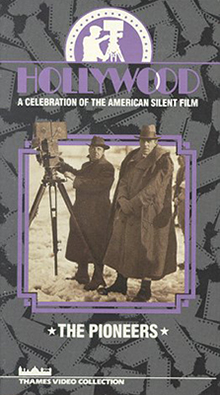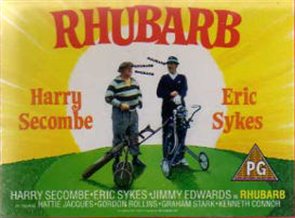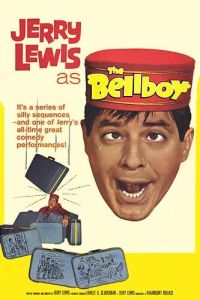
Blazing Saddles is a 1974 American satirical postmodernist Western black comedy film directed by Mel Brooks, who co-wrote the screenplay with Andrew Bergman, Richard Pryor, Norman Steinberg and Alan Uger, based on a story treatment by Bergman. The film stars Cleavon Little and Gene Wilder. Brooks appears in two supporting roles: Governor William J. Le Petomane, and a Yiddish-speaking Indian chief; he also dubs lines for one of Lili Von Shtupp's backing troupe and a cranky moviegoer. The supporting cast includes Slim Pickens, Alex Karras and David Huddleston, as well as Brooks regulars Dom DeLuise, Madeline Kahn and Harvey Korman. Bandleader Count Basie has a cameo as himself, appearing with his orchestra.

Comedy film is a film genre that emphasizes humor. These films are designed to amuse audiences and make them laugh. Films in this genre typically have a happy ending, with dark comedy being an exception to this rule. Comedy is one of the oldest genres in film, and it is derived from classical comedy in theatre. Some of the earliest silent films were slapstick comedies, which often relied on visual depictions, such as sight gags and pratfalls, so they could be enjoyed without requiring sound. To provide drama and excitement to silent movies, live music was played in sync with the action on the screen, on pianos, organs, and other instruments. When sound films became more prevalent during the 1920s, comedy films grew in popularity, as laughter could result from both burlesque situations but also from humorous dialogue.

A silent film is a film without synchronized recorded sound. Though silent films convey narrative and emotion visually, various plot elements or key lines of dialogue may, when necessary, be conveyed by the use of inter-title cards.

Joseph Frank "Buster" Keaton was an American actor, comedian and film director. He is best known for his silent films during the 1920s, in which he performed physical comedy and inventive stunts. He frequently maintained a stoic, deadpan facial expression that became his trademark and earned him the nickname "The Great Stone Face".

You Can't Do That on Television is a Canadian sketch comedy television series that aired locally in 1979 before airing in the United States in 1981. It featured adolescent and teenage actors performing in a sketch comedy format similar to America's Rowan & Martin's Laugh-In and Canada's Second City Television. Each episode had a specific theme, typically relating to the popular culture of the time.
Dead air, also known as unmodulated carrier, is an unintended period of silence that interrupts a broadcast during which no audio or video program material is transmitted.

Silent Movie is a 1976 American satirical silent comedy film co-written, directed by and starring Mel Brooks, released by 20th Century Fox in summer 1976. The ensemble cast includes Dom DeLuise, Marty Feldman, Bernadette Peters. and Sid Caesar, with cameos by Anne Bancroft, Liza Minnelli, Burt Reynolds, James Caan, Marcel Marceau, and Paul Newman as themselves, and character cameos by Harry Ritz of the Ritz Brothers, Charlie Callas, and Henny Youngman. The film was produced in the manner of an early-20th-century silent film, with intertitles instead of spoken dialogue; the soundtrack consists almost entirely of orchestral accompaniment and sound effects. It is an affectionate parody of slapstick comedies, including those of Charlie Chaplin, Mack Sennett, and Buster Keaton. The film satirizes the film industry, presenting the story of a film producer trying to obtain studio support to make a silent film in the 1970s.

A double act is a form of comedy originating in the British music hall tradition, and American vaudeville, in which two comedians perform together as a single act, often highlighting differences in their characters' personalities. Pairings are typically long-term, in some cases for the artists' entire careers. Double acts perform on the stage, television and film.

Hollywood is a British television documentary miniseries produced by Thames Television and originally broadcast on ITV in 1980. Written and directed by film historians Kevin Brownlow and David Gill, it explored the establishment and development of the Hollywood studios and their cultural impact during the silent film era of the 1910s and 1920s. At the 1981 BAFTA TV Awards, the series won for Best Original Television Music and was nominated for Best Factual Series, Best Film Editing and Best Graphics.

Silent comedy is a style of film, related to but distinct from mime, invented to bring comedy into the medium of film in the silent film era (1900s–1920s) before a synchronized soundtrack which could include talking was technologically available for the majority of films. Silent comedy is still practiced, albeit much less frequently, and it has influenced comedy in modern media as well.

In comedy, a visual gag or sight gag is anything which conveys its humour visually, often without words being used at all. The gag may involve a physical impossibility or an unexpected occurrence. The humor is caused by alternative interpretations of the goings-on. Visual gags are used in magic, plays, and acting on television or movies.

One Week is a 1920 American two-reel silent comedy film starring Buster Keaton, the first independent film production he released on his own. The film was written and directed by Keaton and Edward F. Cline, and runs for 19 minutes. Sybil Seely co-stars. The film contains a large number of innovative visual gags largely pertaining to either the house or to ladders.

Rhubarb is a 1969 British short film written and directed by Eric Sykes, starring Sykes, Harry Secombe and Jimmy Edwards. The dialogue consists entirely of repetitions of the word "rhubarb", all the characters' last names are "Rhubarb", the vehicle number plates are "RHU BAR B", and a baby "speaks" by holding a sign with the word "rhubarb" written on it. Sykes remade the film in 1980 as Rhubarb, Rhubarb for Thames Television.

The Silence of the Hams is a 1994 comedy thriller film written by, directed by, and starring Italian comedian Ezio Greggio. It is a parody of many popular thriller and horror films, notably The Silence of the Lambs and Psycho. Along with Greggio, it features an ensemble cast of Dom DeLuise, Billy Zane, Joanna Pacuła, Charlene Tilton and Martin Balsam.

Clyde Adolf Bruckman was an American writer and director of comedy films during the late silent era as well as the early sound era of cinema. Bruckman collaborated with such comedians as Buster Keaton, Monty Banks, W. C. Fields, Laurel and Hardy, The Three Stooges, Abbott and Costello, and Harold Lloyd.
Comedic device refers to a kind of device used to make a statement more humorous. In layman's terms, it is what makes things funny.

The Bellboy is a 1960 American comedy film written, produced, directed by and starring Jerry Lewis. It was released on July 20, 1960, by Paramount Pictures and marked Lewis's directorial debut.

Hollywood Cavalcade is a 1939 American film featuring Alice Faye as a young performer making her way in the early days of Hollywood, from slapstick silent pictures through the transition from silent to sound.
American comedy films are comedy films produced in the United States. The genre is one of the oldest in American cinema; some of the first silent movies were comedies, as slapstick comedy often relies on visual depictions, without requiring sound. With the advent of sound in the late 1920s and 1930s, comedic dialogue rose in prominence in the work of film comedians such as W. C. Fields and the Marx Brothers. By the 1950s, the television industry had become serious competition for the movie industry. The 1960s saw an increasing number of broad, star-packed comedies. In the 1970s, black comedies were popular. Leading figures in the 1970s were Woody Allen and Mel Brooks. One of the major developments of the 1990s was the re-emergence of the romantic comedy film. Another development was the increasing use of "gross-out humour".
Midnight ghost shows were traveling stage shows that originated in the United States during the Great Depression. The shows were influenced by the stage magic traditions that preceded them, and typically incorporated illusions; simulated séances; interactivity between a host—often called a "ghostmaster"—or performers and the audience; a "blackout" sequence in which the theater would go completely dark; and horror film screenings before or after the show.















